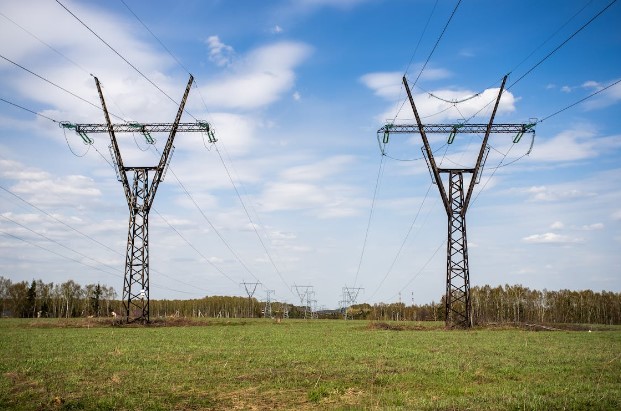The last thing you would want moving into your new home is for all your electronics to blow up the second you plug them in. You’d be surprised that it happens more often than expected, and nine times out of ten, it has something to do with the electrical grounding system.
An unstable electrical system can be a serious hazard for you and your family. Check out why you should test the electrical grounding system before moving to a new home.
What is The Electrical Grounding System?
The electrical grounding system ensures that excess electricity, in case of a short circuit, can flow back into the ground without causing any damage to your appliances or you. You can call this an exit for the extra electricity to pass through the ground without damaging electronics or electrocuting you.
Electrical balance is maintained by transporting positive charges carried through the neutral wiring and negative charges through the black wiring circulating into the ground. At times, this balance may be thrown off, causing a short circuit.
A short circuit can cause the current to flow through the electronics, their metal exteriors, and other materials inside the house. Besides electrocution, short circuits can cause electrical fires that can be devastating. So an efficient electrical grounding system is absolutely necessary for any property.
Types of Electrical Grounding Systems
Three types of electrical grounding systems are widely used in the housing and industrial sectors. They are,
Resistance Grounded Systems: This is when systems have connections between neutral wirings and the ground via an electrical resistor. There are two types of resistance grounding systems, high-resistance grounding and low-resistance grounding systems.
Solidly Grounded Systems: It’s in the name, this is where the electrical power system is directly connected to the ground. These systems can handle a large amount of power and reduce the risk of overvoltage and short circuits.
Ungrounded Systems: This type of ungrounded systems are riskier and less widely used now. They are also relatively more expensive to install. Electricity in an ungrounded system is connected to the ground via its natural capacitance.
Benefits of Electrical Grounding System
There are many advantages of an electrical grounding system; some of the major ones are,
Protects your electrical appliances and wires.
Protects you from being electrocuted and suffering injuries.
Keeps the building safe from potential electrical damage and/or fires.
Keeps the flow of current balanced, diverting into the ground.
Protects electrical wiring from the oversupply of voltage.
Ensures fast and seamless transmission of electricity.
Reduces cost of repairing and re-installation of connections.
Reasons You Should Test The Electrical Grounding System Before Moving to a New Home
Before moving into a new home, you should always test the electrical grounding system. There are two types of testing, testing when you’re building and routine testing to ensure the system is functioning. Here are some reasons why it’s very crucial to test electrical grounding systems,
Protects against electrical hazards and overloads: An efficient and working electrical grounding system will protect you and your home from excessive power surges. A faulty grounding system will put you and your family at risk of electrocutions and electrical fires.
Finding out potential faults: Testing is a great way to see if the electrical grounding system has any problems or incompetencies in functioning; it helps rule out any major issues that can be a possible
Problems in Bonding: When you don’t bond your electrical system, there is free current flowing that can risk your and your family’s safety. Visual testing can usually take care of such issues; you can use a multimeter or clamp meters to test yourself.
Faster Transmission of Power: By testing the electrical grounding system before you move in, you can keep your electronics safe by ensuring the power flow is seamless, fast, and secure.
Conclusion
There you have it! We hope you enjoyed this article and found it useful. We also hope this establishes the importance of testing the electrical grounding systems before moving to a new home. Share with your friends and family so they can also learn the necessity of testing their grounding systems and staying safe.
FAQs
How Do I Properly Test My Property’s Electrical Grounding System?
Ans: You can inspect your property for an electrical grounding system yourself or have professional service providers come and do it for you. We’ll give you a brief run-down of what the testing methods can include,
The most widely used method, a soil-resistivity test, measures the electrical conductivity of the soil.
Fall of potential tests measure grounding systems entirely or individually. It helps measure the ability to dissipate electricity.
Stakeless tests measure the resistance of earth electrodes. These tests are comparatively easier to conduct.
Selective tests are similar to the fall of potential tests, but it is much safer to conduct.
What Type of Soil/Lands Are Good Conductors of Electricity?
Ans: Lands with soils that have higher moisture levels and salt levels are good conductors of electricity. Sandy soils that get rid of moisture quickly and cannot retain much moisture are not very good conductors of electricity. This is deduced by conducting a soil resistivity test. Clay soils have the highest conductivity of any type of soil and are best for installing an efficient electrical grounding system. When inspecting a raw land for development, conducting a soil resistivity test to determine the conductivity is crucial. This will ensure a proper electrical system and keep you and other residents safe from potential hazards and dangers.










